Around London, 13 small green barns are reserved for those who have 'The Knowledge'.
"We are a Victorian institution," black taxi driver Henry announced proudly, pulling his tartan hat. It was a gray morning in London and I was wedged in a small green warehouse behind a small U-shaped table. Around me there was a group of taxi drivers sipping cups of tea and spooning forks of scrambled egg and sausage.
The tiny warehouse in Russell Square is where the secret London guards are gathered - dark taxi drivers whose minds are mapped with every inch of the city. This is one of 13 taxi drivers shelter left in the capital, and only licensed drivers who pass the Knowledge test - memorize every road, landmark and route in London - are allowed in.
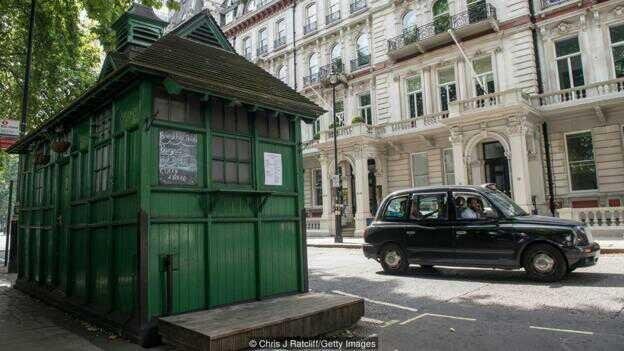
Thirteen historic taxi shelters can be found all over London (Credit: Chris J Ratcliff / Getty Images)
The idea for a shelter came in the late nineteenth century when George Armstrong, a year before he was editor of The Globe newspaper, was unable to call a taxi during a snowstorm because the drivers, who were then riding horses, were huddled in nearby pubs. He worked closely with philanthropists, including the Earl of Shaftesbury, to find ways to keep drivers straight and narrow - and out of drinks.
The Cabmen's Shelter Fund was born in 1875, building the first cottage in St. John's Wood. It still operates today, although many of the 60 huts built since then have been demolished.
This is where the secret Londoners are gathered
Each cottage is built no bigger than horse and carriage, in accordance with the rules of the Metropolitan Police as they stand on public highways. They provide shelter and sustenance for the driver of the train (black-taxi), with strict rules against inauguration, gambling, gambling, and drinking alcohol.
Then came World War I. The drivers and their vehicles were designed, plunging the taxi trade - and the shelter - downhill. "We lost people, cars and horses," said Gary, one of the taxi drivers I spoke to at Russell Square.
Unused, unloved and unprotected, oak cottages decay and destruction. Some were destroyed by bombs during World War II, while many were later bulldozed in road widening schemes.
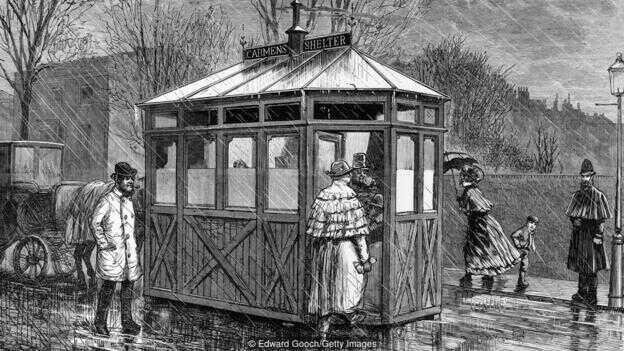
Dibangun pada akhir abad ke 19 dan awal abad 20, gubuk hijau menyediakan tempat berlindung bagi pengemudi kereta api kota (Credit: Edward Gooch / Getty Images)
Now there are only 13 left, with 10 operations. Each is registered Grade II, which means they are considered a building with special interest and every effort should be made to preserve it. They are owned by Worshipful Company of Hackney Carriage Drivers (WCHCD), a guild for those who make a living through trade. The Cabment Storage Fund is responsible for maintenance and maintenance, issuing an annual license to those who run it.
"Taxi trading is very quiet," said Colin Evans, a 44-year-old taxi driver and trustee of the fund. "This is a place where you can go and have tea or coffee with your friends. If drivers do not support them, they will be lost forever. "
Gary, who often comes here for tea and complains because "everyone is on the same boat", adds: "I have been driving a taxi for over a few years and have recently started using shelters. I decided, used them or lost them.
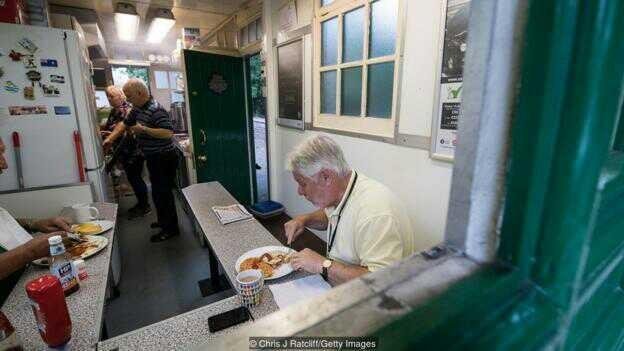
The driver's shelter is no bigger than horse and carriage, and only drivers are allowed in. (Credit: Chris J Ratcliff / Getty Images)
Mostly serve breakfast (sausage, eggs, bacon), sandwiches and hot drinks, with the occasional pie or lasagna cooked by the owners at home and heated in a skinny kitchen. Non-taxi drivers are not allowed to sit inside - unless given a rare invitation - but can book through the hatch window.
"We bring in more money that way," said Jude Holmes, who runs the kitchen at Russell Square. "I can serve hundreds of people while the driver is sitting with a cup of tea."
It's like their second home
As we sat there, the endless drizzle outside pulled more taxis through the door, each greeting the other like a family member.
"My little gang comes every day," said Holmes. "I worry a bit if I do not see them. It's like their second home. Sometimes they even make their own tea. "He added that newer drivers are often too intimidated to go inside, preferring to order bacon sandwiches on the windows.
#"Sometimes it feels a bit cliché," Gary admitted.
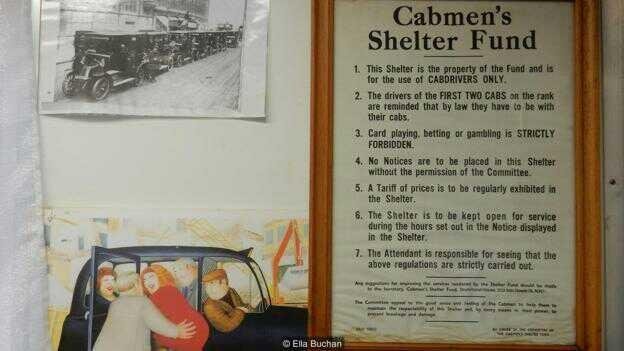
Playing cards and gambling is prohibited inside the London taxi cab ward (Credit: Ella Buchan)
The kettle was bubbling, teaspoon chiming against the porcelain, and the flesh fluttered and hissed in the pot as the conversation shifted to the biggest bugbears of the taxi driver. Being 'bilked', for example, when a fare goes without pay. Struggling to find public toilets when at work is another common complaint (shelters do not have loos).
Most drivers have other performances, such as musicians, artists, TV producers, even actors. But, they told me, once a taxi driver - always a taxi driver. "If you retire, you die," Gary said deadpanned.
Anecdot pours faster than tea. There is a story of 'Fat Ray', so big she squeezes herself behind the wheel every morning and does not move until she comes home. "He can not come," Henry said, brushing his hands around the shelter. "He'll never get through the door!"
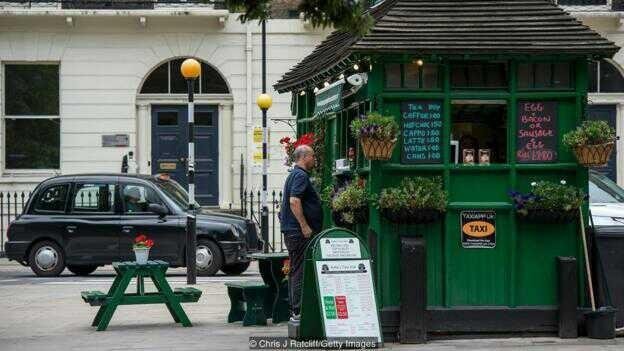
Most driver shelters serve breakfast, sandwiches and hot drinks (Credit: Chris J Ratcliff / Getty Images
Evans took me around in his cabin, dropped by the Temple Place shelter at Victoria Embankment, where a team was repairing the damage caused by a truck.
Class II Status of shelters means elaborate and expensive restorations. The renovation costs around £ 30,000, Evans estimates, and the replacement material must be in accordance with the original. Even paint colors - Dulux Buckingham Paradise 1 Green - prescribed to reflect the first hut.
#They represent the moment on time
The shelter has also been hit by noise restrictions in residential areas, and none of which currently operate at night - most open around 07:00 and closed at 13:00. A cottage at Chelsea Embankment has been closed for five years due to parking restrictions, and the fund is considering donating it to the London Transport Museum
Most importantly, Evans said, these little huts should not be lost - nor should their history be forgotten. "It's too easy to get rid of these things. The shelter is unique. They represent the moment in time. "
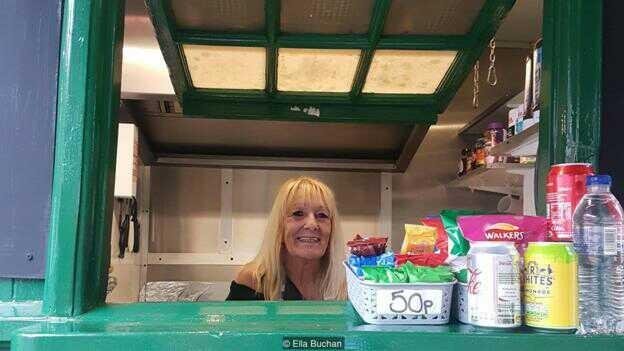
Jude Holmes also sells snacks to the public via Russel Square shelter hold (Credit: Ella Buchan)
It's true there's a lot of history packed inside their walls. Evans told me that the Gloucester Road shelter was nicknamed 'The Kremlin' because it was frequented by left-wing drivers. The bulldozed Piccadilly lodge is where champagne-driven parties in the 1920s and dubbed the 'Turf Junior Club' - after a special male club nearby - by aristocratic escorts (without taxi drivers) smuggled in liquor.
And according to local legend, a man who claimed to be Jack the Ripper had visited Westbourne Grove shelter.
The physical signs of their history remain. The tender taped to the bottom of the hut is where the drivers tether their horses before going inside. The animals that drank from the marble trough, are now gone. Each shelter still has carved roof vents - a reminder of a wood burning stove once used for heating and cooking.
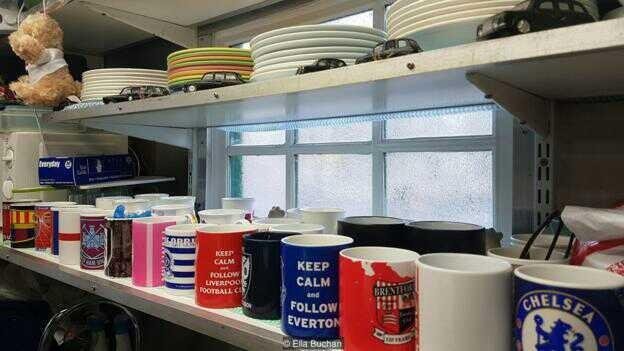
At Warwick Avenue shelter, the shelves are filled with mugs of taxis bearing the names of their soccer teams (Credit: Ella Buchan)
We proceeded to the Warwick Avenue shelter, frequented by musicians and actors who live nearby. British mod-rock player Paul Weller, former lead singer of The Jam and The Style Council, often comes to the hatch for sausage-and-egg sandwiches, Tracy Tucker's license tells me.
Tucker, whose husband is a taxi driver, has been a shelter for 14 years, moved to this location from Thurloe Place in 2016. The roof was recently reconnected at a cost of £ 13,000, financed by the fund.
Inside, the tiny kitchen had a sizzling stove with sausage and bacon, a refrigerator filled with sandwich stuffing and shelves filled with taxi drivers' cups containing the emblems of their football team. When someone's team is relegated or lost in a big game, Tucker ties a black ribbon on the handle of their mug with sympathy.
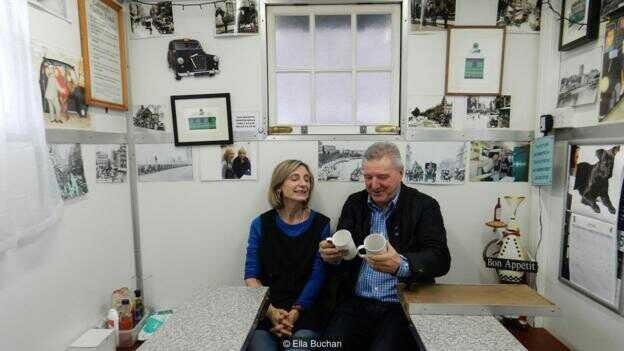
Tracy Tucker, who manages the Warwick Avenue shelter, sees her regular customers as family (Credit: Ella Buchan)
For his regular customers, Tucker is family.
"They see me as a sister," he said. "If I get sick, I have to send a message about 20 people to say that the shelter is closed. Some of them will not know what to do with themselves. "
If we lose this, we lose some of London's history
He has his own rules: not staring at the phone and not complaining about Uber. "We all know it's quiet. Trade is dying, and I have been thinking about what I would do if I had to get another job. I do not think I can work anywhere else. "
"A little life going on in this shelter," Evans said with a chuckle. "Not just the building. That's the character too. If we miss this, we miss part of the history of taxi trade and part of London history. It would be very embarrassing. "
If you like this story, you can follow my blog.
Thank you for visiting my blog.
A very interesting post...I like your style.
One advice though, Always put (or cloak) the link of the source of your pictures or other 'borrowed' content.